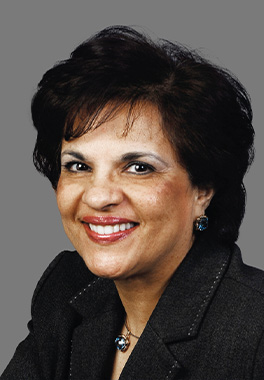
Question Period—Transport
Transport Efficiency
April 13, 2016
The Honorable Senator Mobina S. B. Jaffer:
Minister, my question to you is more on what's happening in my province. I know you visit my province a lot. We have a terrible circulation or transport problem within the Lower Mainland, especially in Surrey. I'm interested in knowing what your plans are to help our province and our municipalities deal with the issue of light transportation in the area of Surrey.
Hon. Marc Garneau, P.C., M.P., Minister of Transport: Thank you, senator.
Without being necessarily specific about Surrey, I will say in general that our government has pledged unprecedented amounts of money to address the issue of public transportation. As you know, in the election we said that we would add $60 billion to current infrastructure programs, $20 billion of which would be for public transit, $20 billion for social infrastructure — and I'm talking about affordable housing — and $20 billion for green infrastructure.
That $20 billion for public transit will be spent over the course of the next 10 years. In the budget itself, $3.4 billion is initially identified for the next two years. That is to address public transit issues in the provinces that can be addressed immediately. Phase 2 will be the remaining monies in the following eight years.
There are a lot of important projects that will want to have access to those funds, some of which are in the Greater Vancouver Area. Some of them are in my own city of Montreal. I know some are in places like Toronto and Calgary and others. Of course, the funding will be there, and the federal government will cover part of it. There will also be a financial contribution from provinces and municipalities as well. So I think we're making unprecedented investments.
If I may, I would like to also talk about something that concerns me more. I don't say it concerns me more, but it's more within my responsibilities, and that is the corridor infrastructure, which is extremely important in the Vancouver area because the Port of Vancouver is by far the largest port in this country. It passes through 140 million tonnes. The second biggest port has 30 million tonnes. Vancouver is really the giant there.
In fact, last week I was in Vancouver. I crossed the New Westminster railway bridge on a special truck. I went through the Burnaby tunnel — that was an experience — and then came out at the Second Narrows rail bridge. Then we made our way to the North Shore of Burrard Inlet. A huge amount of transportation infrastructure has to work efficiently with the minimum number of bottlenecks. Some of those bottlenecks are at rail crossings, and some of them have been addressed by the previous government, but that causes a lot of traffic problems.
Therefore, where possible, we are using what we call "de- bottlenecking," where one can have a vertical separation between the railroads that are going through the Vancouver area — and in other cities, as well — and important traffic arteries. We can solve a lot of problems, because that creates a huge amount of traffic slowdown.
Those are things that I'm doing for the reasons of efficiency of the transport corridors — the Asia-Pacific Gateway, if you like — and the same on the eastern side. But I think it will have an indirect benefit as well for those who have to drive through the cities.

